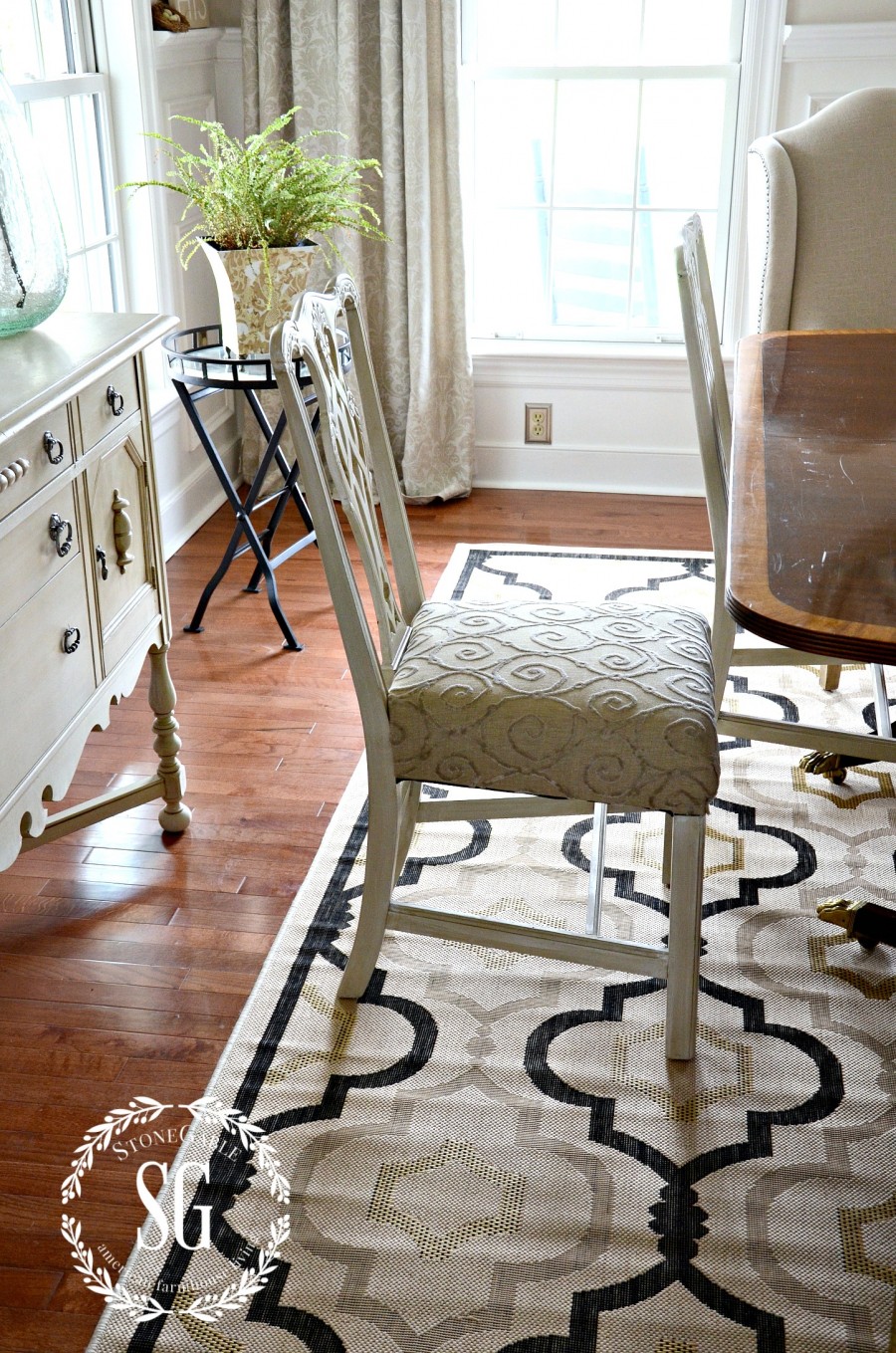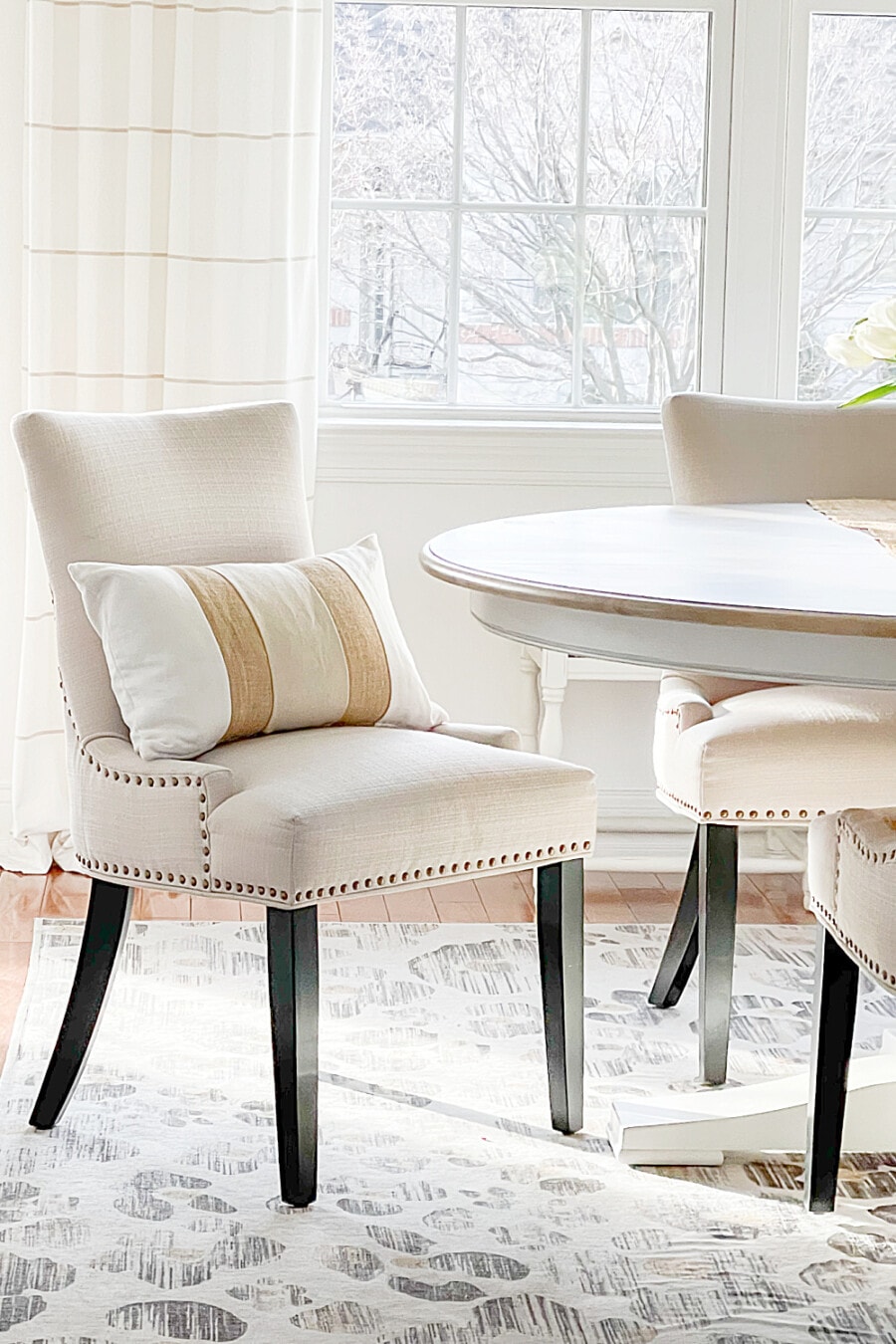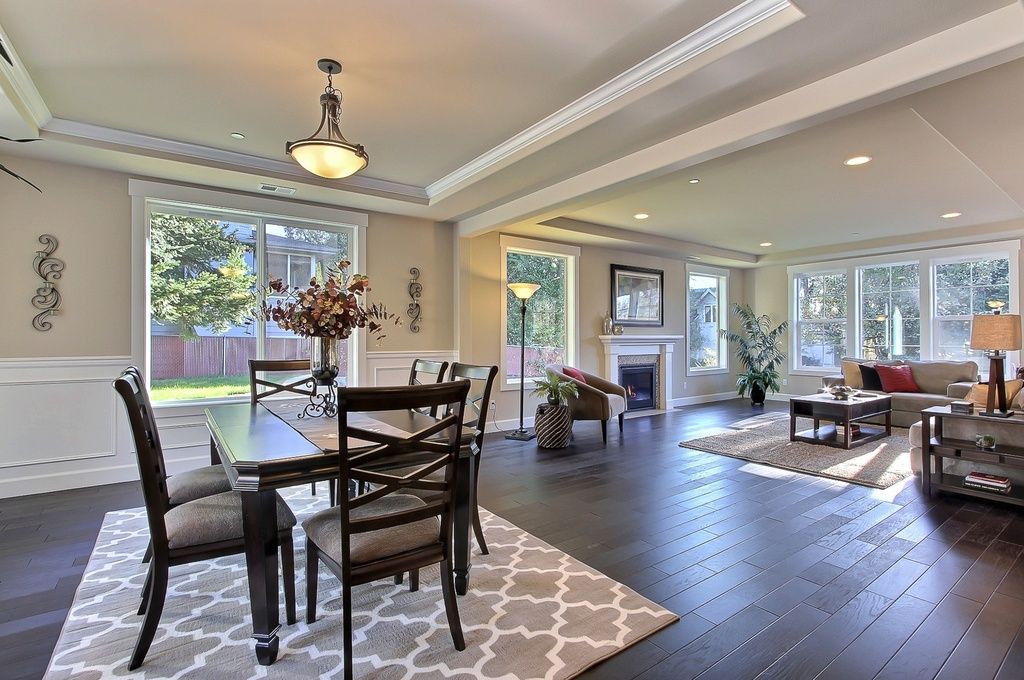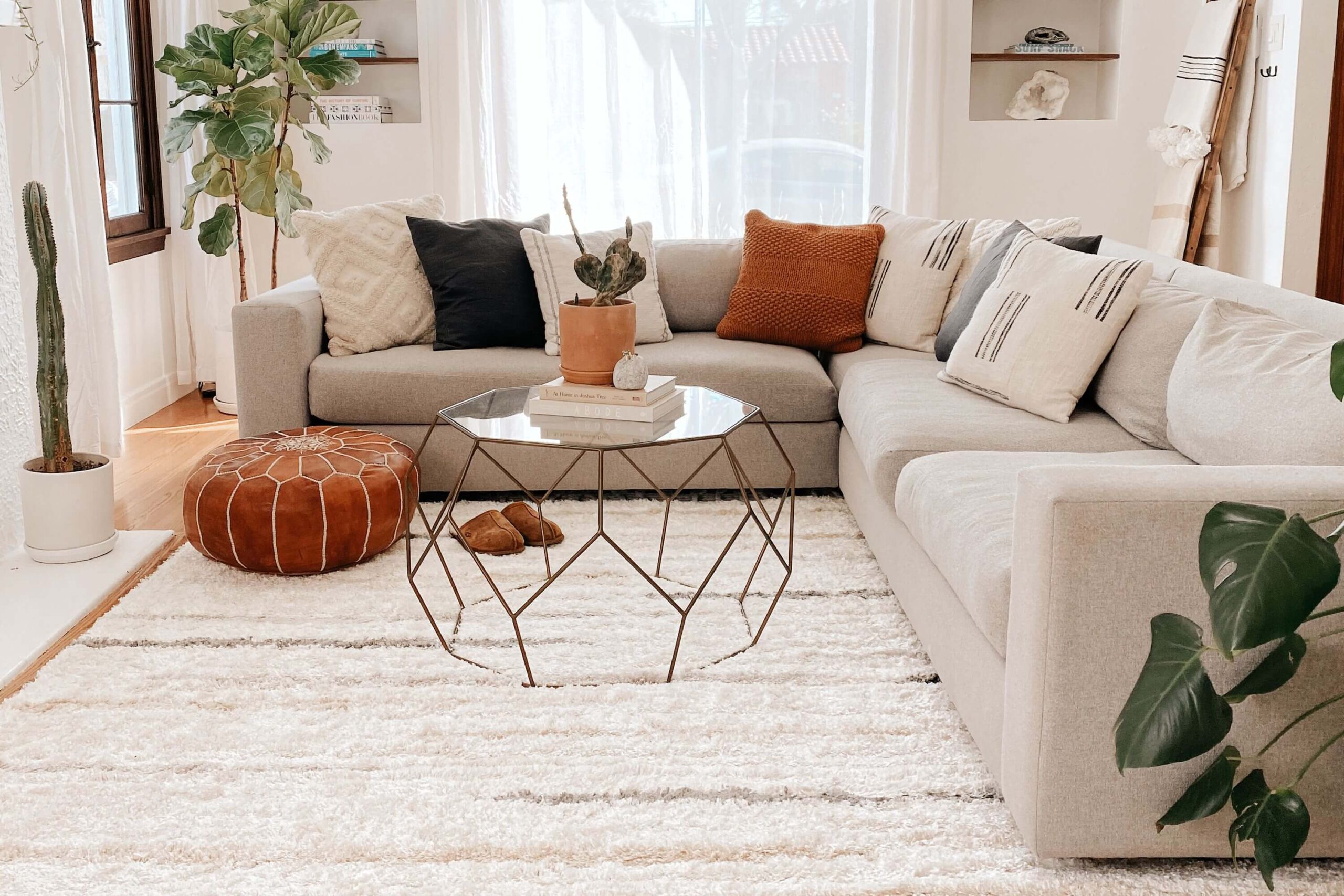Choosing the perfect rug for your dining room can be a challenging task. You want it to be functional, stylish, and complement the overall design of the room. But with so many options and styles available, it's easy to get overwhelmed. That's why we've put together this guide to help you find the top 10 main rug placements for your dining room.Rug Placement in Dining Room:
When it comes to rug placement in your dining room, there are a few different options to consider. You can either have the rug completely under the table and chairs, have it partially under the table, or have it placed in a way that only the front legs of the chairs are on the rug. Each option has its advantages and can create a different look in your dining room.Dining Room Rug Placement Ideas:
Before we dive into the different placement options, it's important to know how to choose the right rug for your dining room. The first thing to consider is the size of your dining room. You want the rug to be proportionate to the space and not look too small or too large. As a general rule of thumb, the rug should be at least two feet larger than your dining table on all sides. Next, think about the shape of your dining room table. If you have a rectangular table, a rectangular rug will work best. For a round table, a round or square rug will complement the shape. It's important to keep in mind the dimensions of your table when choosing a rug to ensure it fits comfortably in the space.How to Choose the Right Rug for Your Dining Room:
As mentioned earlier, the size of your rug is crucial to achieving the perfect rug placement in your dining room. Here is a quick guide to help you determine the right size rug for your dining room based on the size of your table: - For a round table that seats 4-6 people, a 6' round rug is ideal.
- For a rectangular table that seats 6-8 people, an 8' x 10' rug is recommended.
- For a rectangular table that seats 8-10 people, a 9' x 12' rug is best.
- For a square table that seats 4-6 people, a 6' x 6' or 8' x 8' rug will work well.Dining Room Rug Size Guide:
When it comes to choosing the best rug for your dining room, there are a few factors to consider. First, you want to make sure the rug is durable and easy to clean. Since dining rooms are high traffic areas, spills and stains are bound to happen. Look for rugs made from materials such as wool, cotton, or synthetic fibers that are stain-resistant and easy to clean. Another important factor to consider is the design and style of the rug. The rug should complement the overall design of your dining room and add an element of warmth and coziness. Consider the color, pattern, and texture of the rug and how it will tie in with the rest of the room's decor.Best Rugs for Dining Rooms:
The most common rug placement in a dining room is having the rug under the table and chairs. This creates a defined and cohesive look in the space. Make sure the rug is large enough to accommodate the chairs, even when they are pulled out. This will prevent the chairs from catching on the edge of the rug and causing it to shift. For this placement, a rectangular or square rug works best. The rug should extend at least 2 feet beyond the table on all sides. This will ensure that the chairs are fully on the rug when pulled out and provide enough space for people to comfortably move around the table.Rug Placement Under Dining Table:
If you have a round dining table, you have the option of placing a round or square rug underneath. A round rug can create a beautiful focal point in the room, while a square rug can add a unique touch and contrast to the round shape of the table. When it comes to size, the rug should be at least 2 feet larger than the table on all sides. This will ensure that the chairs are fully on the rug and create a cohesive look. If you opt for a square rug, you can also consider placing it diagonally under the round table for a more interesting layout.Dining Room Rug Placement with Round Table:
In a small dining room, rug placement is crucial to ensure the space doesn't feel cramped or cluttered. The key is to choose a rug that is proportionate to the room and doesn't overwhelm the space. A small rectangular or square rug can work well in a small dining room, as long as it is placed under the table and chairs. You can also consider placing a runner rug along the length of the table if you have a narrow dining room. This will create a visual impact and elongate the space. Just make sure the rug is wide enough to accommodate the chairs when pulled out.Rug Placement in Small Dining Room:
Many dining rooms feature hardwood floors, which can make rug placement a bit trickier. The key is to choose a rug that complements the flooring and doesn't clash with it. For hardwood floors, a rug with a bold pattern or bright color can add a beautiful pop to the space. When placing a rug on hardwood floors, it's important to use a rug pad. This will prevent the rug from slipping and sliding, and also protect your floors from scratches. A rug pad also adds extra cushioning, making the dining room more comfortable for both you and your guests.Dining Room Rug Placement with Hardwood Floors:
If your dining room is part of an open concept living space, rug placement becomes even more important. The rug should not only complement the dining area but also tie in with the other areas of the room. A good tip is to choose a rug that has similar colors or patterns as the other rugs in the space. In an open concept dining room, you can also consider placing the rug under the main seating area, such as a sofa or chairs, and have it extend slightly into the dining area. This will create a cohesive flow and connect the different areas of the room.Rug Placement in Open Concept Dining Room:
The Importance of Rug Placement in a Dining Room

Creating a Cohesive Dining Room Design
 When it comes to designing a dining room, there are many elements to consider, from furniture and lighting to wall color and décor. But one often overlooked aspect that can have a significant impact on the overall design is
rug placement
. The right rug can tie the entire room together and create a cohesive and inviting space for dining and entertaining.
When it comes to designing a dining room, there are many elements to consider, from furniture and lighting to wall color and décor. But one often overlooked aspect that can have a significant impact on the overall design is
rug placement
. The right rug can tie the entire room together and create a cohesive and inviting space for dining and entertaining.
Choosing the Right Size Rug
 Before exploring placement options, it's essential to choose the right size rug for your dining room. A common mistake many homeowners make is choosing a rug that is too small for the space. It's essential to measure your dining room table and allow for at least 24 inches of extra space on all sides to ensure chairs can comfortably slide in and out without catching on the rug.
Before exploring placement options, it's essential to choose the right size rug for your dining room. A common mistake many homeowners make is choosing a rug that is too small for the space. It's essential to measure your dining room table and allow for at least 24 inches of extra space on all sides to ensure chairs can comfortably slide in and out without catching on the rug.
Placing the Rug Under the Table
 One of the most common ways to place a rug in a dining room is to have it centered under the dining table. This placement not only visually anchors the table in the room but also helps define the dining space. It's essential to make sure the rug is centered under the table, with an equal amount of rug visible on all sides. This placement works best for square or round dining tables.
Pro Tip:
For rectangular tables, consider using a rectangular rug, with the longer sides running parallel to the table's longest sides. This will create a more balanced and visually appealing design.
One of the most common ways to place a rug in a dining room is to have it centered under the dining table. This placement not only visually anchors the table in the room but also helps define the dining space. It's essential to make sure the rug is centered under the table, with an equal amount of rug visible on all sides. This placement works best for square or round dining tables.
Pro Tip:
For rectangular tables, consider using a rectangular rug, with the longer sides running parallel to the table's longest sides. This will create a more balanced and visually appealing design.
Placing the Rug in Front of the Buffet or Sideboard
 If your dining room has a buffet or sideboard, consider placing the rug in front of it. This placement creates a defined area for the buffet and adds a touch of elegance to the room. It's essential to make sure the rug is at least the length of the buffet, with a few inches of space on either side to create a border.
If your dining room has a buffet or sideboard, consider placing the rug in front of it. This placement creates a defined area for the buffet and adds a touch of elegance to the room. It's essential to make sure the rug is at least the length of the buffet, with a few inches of space on either side to create a border.
Using Multiple Rugs
/choose-dining-room-rug-1391112-hero-4206622634654a6287cc0aff928c1fa1.jpg) For larger dining rooms, or those with unique shapes, using multiple rugs can be an effective way to define the dining area. Consider using a large rug under the dining table and smaller accent rugs in other areas of the room, such as in front of a bar cart or under a console table.
In conclusion,
rug placement
may seem like a small detail in the grand scheme of designing a dining room, but it can make a significant impact on the overall look and feel of the space. By choosing the right size rug and strategically placing it, you can create a cohesive and visually appealing dining room that will impress your guests and make every meal feel like a special occasion.
For larger dining rooms, or those with unique shapes, using multiple rugs can be an effective way to define the dining area. Consider using a large rug under the dining table and smaller accent rugs in other areas of the room, such as in front of a bar cart or under a console table.
In conclusion,
rug placement
may seem like a small detail in the grand scheme of designing a dining room, but it can make a significant impact on the overall look and feel of the space. By choosing the right size rug and strategically placing it, you can create a cohesive and visually appealing dining room that will impress your guests and make every meal feel like a special occasion.















:max_bytes(150000):strip_icc()/DiningRoomwithRug-3034f93d3a964cc8b9ba8b690bebddfb.jpg)




































:max_bytes(150000):strip_icc()/choose-dining-room-rug-1391112-hero-4206622634654a6287cc0aff928c1fa1.jpg)




























